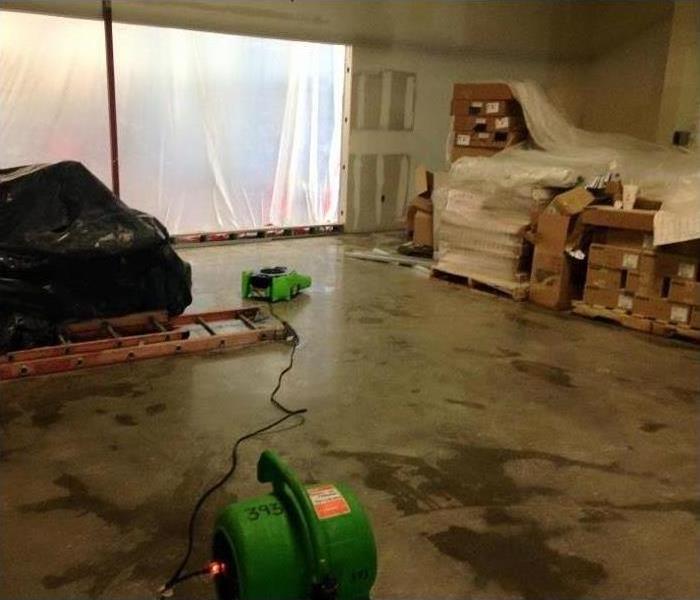The Dangers of Water Intrusion in Your Commercial Building
5/25/2020 (Permalink)
 SERVPRO of Jacksonville Beach/Ponte Vedra dries out a commercial space after fire suppression system malfunctioned.
SERVPRO of Jacksonville Beach/Ponte Vedra dries out a commercial space after fire suppression system malfunctioned.
Water intrusion may be more severe in commercial buildings than in a residential setting, and the effects more extensive. Many commercial structures have a larger volume water entering the premises through plumbing supply lines and at a higher water pressure. The quantity of outgoing sewage is greater than a typical residence, as well. Commercial buildings tend to be of larger square footage than a home, so entry points for water intrusion through areas like the roof, exterior walls or windows are greater in number, as well.
Water intrusion in commercial buildings can damage high-value equipment like computers, and also building services such as HVAC, lighting, elevators and security tech equipment and server rooms. Common long-term consequences of water damage like the growth of toxic mold and microbial growth may be even more problematic than in a home due to the larger occupancy of a business, or other commercial enterprise. When a greater number of people with a wider range of sensitivity are exposed to mold and bacteria spores, health impacts may be significantly magnified, perhaps leading to an enforced closure of the facility until the situation is fully remediated and a clearance test is performed.
Typical issues from water intrusion in the commercial environment include:
- Water from roof leaks penetrating through ceilings. Chronic leakage through the roof may proceed unnoticed for long periods, hidden by suspended ceiling panels or in electrical or HVAC service areas above.
- Ruptures of water supply lines typically release clean (white) water. Sewage backups or leaks in drain pipes release toxic (black) water that may be a biohazard and require evacuation of the premises.
- Flooding from external sources can result from heavy rains, storms such as hurricanes, rapid snow melt or local overflowing lakes or rivers.
- Moisture intrusion through the building envelope is typically more subtle. Humid outdoor air may be drawn in through structural cracks and gaps. Over a period, chronic dampness forms in spaces like wall voids, unventilated attics and service areas, spawning hidden mold growth that persists unseen.
For professional remediation of water intrusion in commercial buildings and its secondary damages such as mold growth, contact SERVPRO of Jacksonville Beach/Ponte Vedra at 904-246-6118.





 24/7 Emergency Service
24/7 Emergency Service